Processing steps in enhancing structural details of comet tails
Comet tails, especially near the nucleus, show interesting details that generally have low contrasts and are obscured by the brightness of the tail itself. One method of visualizing these details is by using a LARSON-SEKANINA FILTER (a rotational gradient filter) in which the original image is rotated around the center of the comet's head over a certain angle (e.g. + and - 8-10 degrees) and subtracted from the original. I've used another method in which a ROTATIONAL UNIFORM FILTER around the center of the comet's head is used to smooth-out details. These details then become visible when subtracting this smoothed image from the original: Unsharp masking. In both cases stars present in the original image show up as dark 'stars' or streaks in the resulting contrast-enhanced image. By first removing the stars from the image before applying the rotational uniform filter and performing the sharpening process, this is avoided. Afterward the star-field is added to the contrast-enhanced but starless image. I have summarized and visualized the processing steps below in three vertical flows/columns: Left, following the Larson-Sekanina rotational gradient method; Middle, using unsharp masking with a rotational uniform filter and Right, the same as the middle but using starless images. |
| LARSON_SEKANINA Rotational Gradient | UNSHARP MASKING with a rotational uniform filter |
UNSHARP MASKING of starless images with a rotational uniform filter |
| A. | We start off with a stacked image comprising 9 exposures aligned on the comet's nucleus. The 'right' method starts off with a sum of the same stack of images, however, with stars removed. |
 |
 |
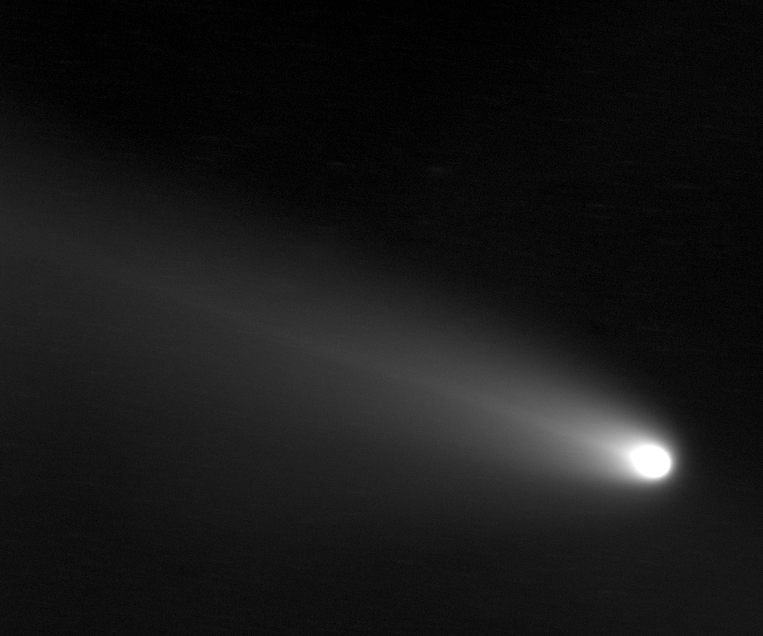 |
| A1. Stack of 9 images of 60 seconds aligned on the comet's nucleus | A2. Stack of 9 images of 60 seconds aligned on the comet's nucleus | A3. Stack of 9 images of 60 seconds stripped of their stars and aligned on the comet's nucleus |
| B. | Using the above image 'A', an image 'B' is generated that is to be subtracted from image 'A' to reveal the subtle details. |
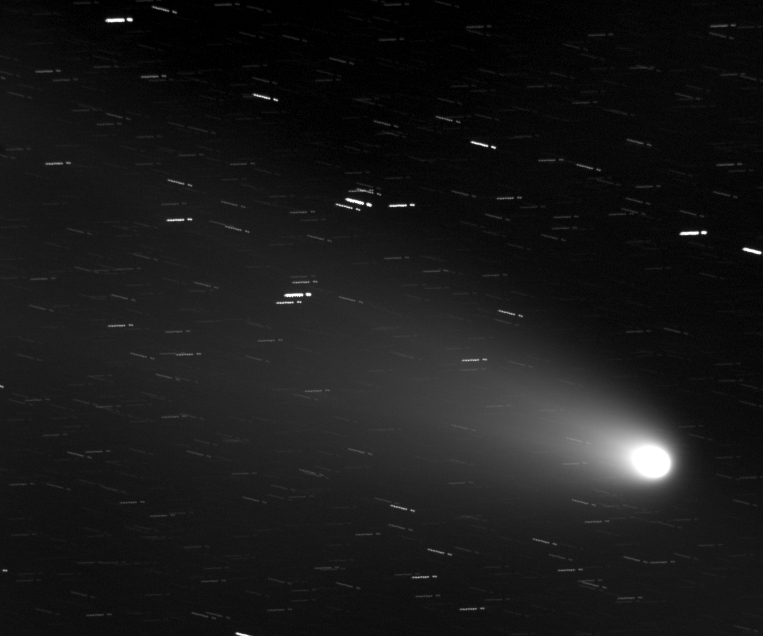 |
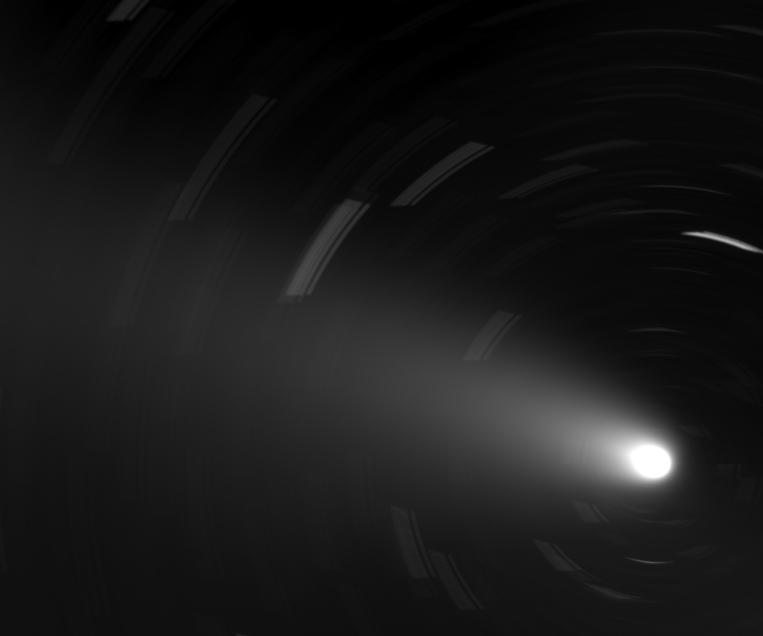 |
 |
| B1. Sum (divided by 2) of image A1 rotated over +8 and -8 degrees around the nucleus |
B2. Image A2 smoothed with a rotational uniform filter centred on the nucleus |
B3. Image A3 smoothed with a rotational uniform filter centred on the nucleus |
| C. | Image 'B' is subtracted from image 'A' revealing subtle details. An offset is added and the difference is multiplied by 3. |
.jpg) |
.jpg) |
.jpg) |
| C1. Image B1-A1+offset, multiplied by 3 | C2. Image B2-A2+offset, multiplied by 3 | C3. Image B3-A3+offset, multiplied by 3 |
| D. | The subtle details of image 'C' are added to the original image 'A' to enhance the visible structure in the comet's tail. |
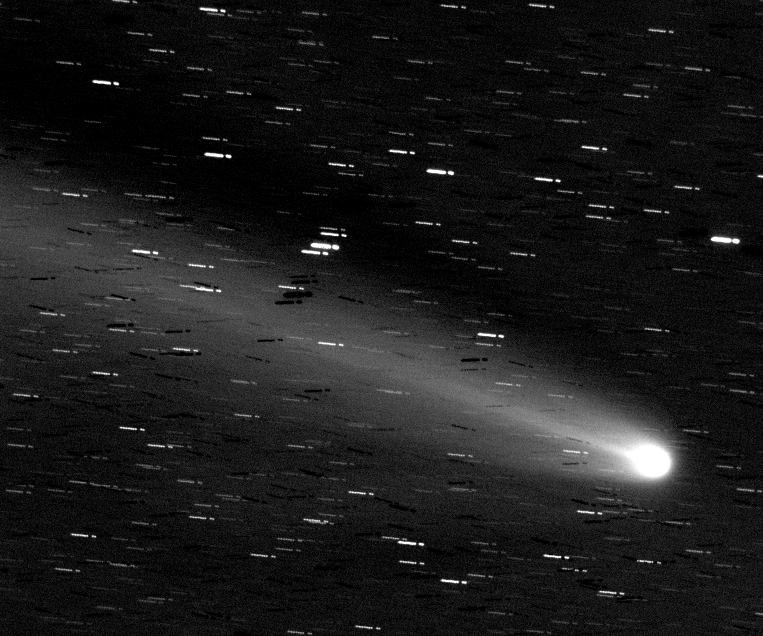 |
 |
 |
| D1. Final result: Image A1 + Image C1 | D2. Final result: Image A2 + Image C2 | D3. Intermediate result: Image A3 + Image C3 |
| E. | Only image D3 has to be further processed to add the missing star field. For this purpose one of the 9 original images is multiplied by 9 and the comet is removed by subtracting image A3: |
 |
||
| E3: Starfield of one of the 9 images (times 9) with the comet subtracted (using image A3 for that purpose) |
| F. | The final result F3 is obtained by adding the star field (image E3) to image D3. The final results of all three methods are shown side by side. |
 |
 |
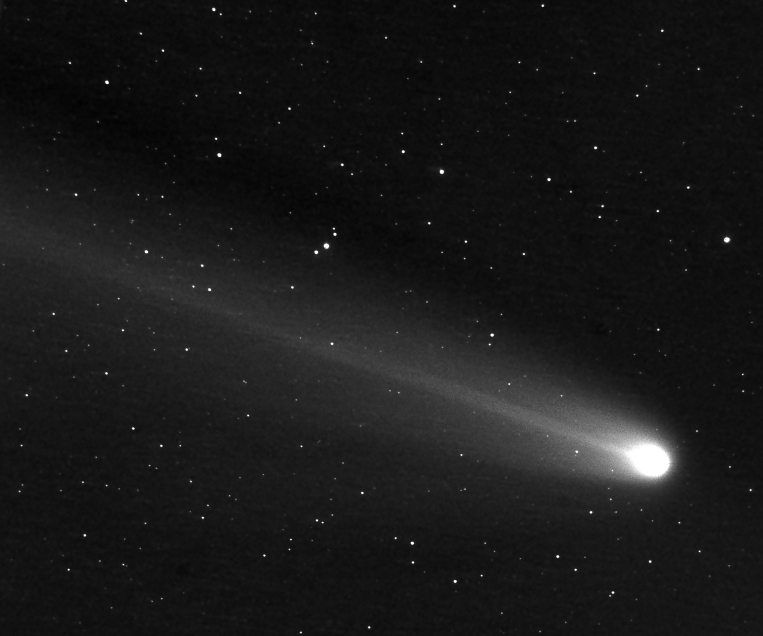 |
| D1. Final result: Image A1 + Image C1 | D2. Final result: Image A2 + Image C2 | F3. Final result: Image A3 + Image C3 |